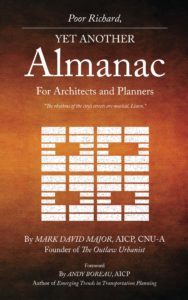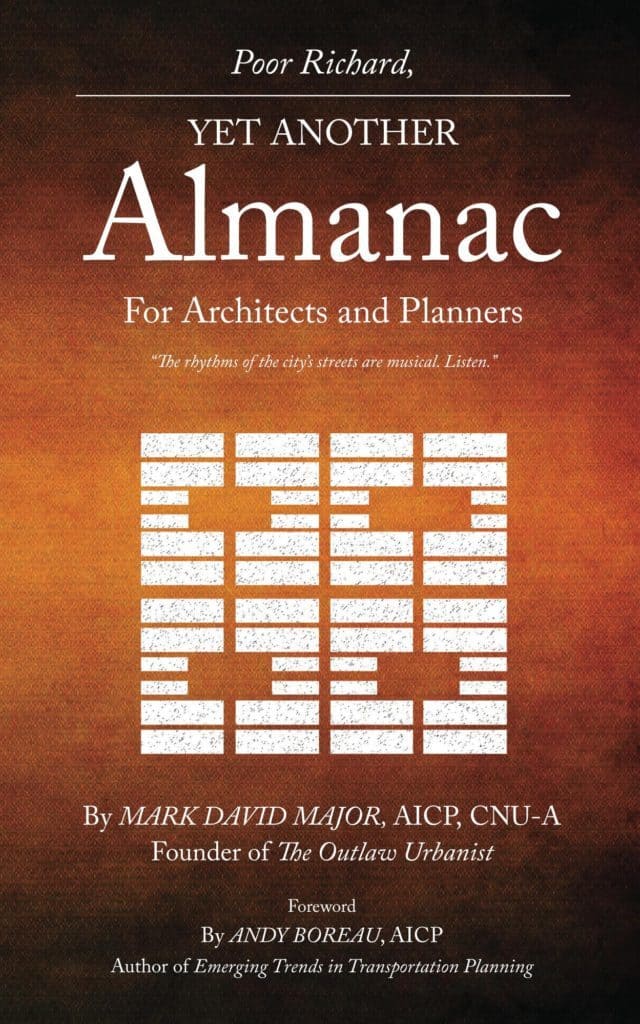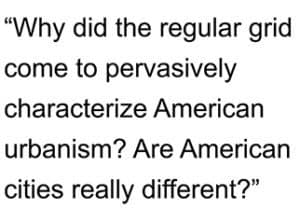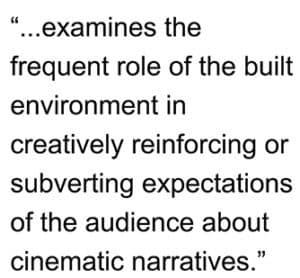“This one book will do more for some readers than four years of higher education.” – Andy Boenau, Foreword to Poor Richard, Yet Another Almanac for Architects and Planners
The third and final volume of the Poor Richard series of almanacs for architects and planners is now available for purchase on Amazon, Kindle, CreateSpace, and other online retailers!
Praise for the first two volumes of the Poor Richard series of almanacs for architects and planners by Mark David Major: “worthwhile” and “thought-provoking” “readers will love” Poor Richard in “following both Benjamin Franklin and Ambrose Bierce” (Planning Magazine and Portland Book Review).
Poor Richard, Yet Another Almanac for Architects and Planners (Volume 3) offers more common sense proverbs, astute observations, and general rules of thumbs about architecture, urban design, town planning, and much more in the third and final volume of the Poor Richard series. Author Mark David Major blends original ideas with adapted wisdom in an easy-to-read manner designed to spark deeper thought about hearth and home, streets and cities, and people and society. It is essential reading for anyone interested in the future of the built environment. Poor Richard’s witticisms are often eloquent, sometimes biting, occasionally opaque in the absence of reflection, and always insightful. They offer a valuable resource for the entire year. A clarion call and warning for everyone involved in the creation of our built environments to embrace their better angels and reject the worse demons of human nature.
The clear message of Poor Richard, Yet Another Almanac for Architects and Planners (Volume 3), with foreword by Andy Boenau (author of Emerging Trends in Transportation Planning), is we can do better and we must do better for the built environment and our cities.
 Poor Richard, Yet Another Almanac for Architects and Planners (Volume 3)
Poor Richard, Yet Another Almanac for Architects and Planners (Volume 3)
by Mark David Major
Foreword by Andy Boenau
Paperback, 148 pages (5″ x 8″)
Forum Books
February 12, 2017
English
ISBN-13: 978-1542443609
ISBN-10: 1542443601
ASIN: B06WLJV6YC
BISAC: Architecture/General
Poor Richard, Yet Another Almanac for Architects and Planners (Volume 3 of the Poor Richard series) is available for purchase from CreateSpace, Amazon, Kindle, and other online retailers around the world. Be sure to check the online store in your country/currency (USA stores available below).
Purchase from CreateSpace here.
Purchase from Amazon here.
Purchase from Kindle Store here




 However, in more important ways, American cities are still subject to the same processes linking street networks and human use found in all cities of the world.
However, in more important ways, American cities are still subject to the same processes linking street networks and human use found in all cities of the world.
 Richard Florida’s article is a good start but delaying action in the USA for the last three decades now requires us to think bolder and get completely ‘outside the box’ to develop truly innovative solutions. We need to simultaneously solve multiple problems while drawing on the beauty of the constitutional system established by the Founding Fathers. Greater local political power for cities is certainly a big issue. Americans now live in an urban nation and we have to address this issue while still maintaining the horizontal and vertical balances of power inherent in the U.S. Constitution. How do we accomplish this? The answer may be to revisit the concept of the city-state for a modern world whilst reforming political representation at the Federal level. What might a plan of action look like?
Richard Florida’s article is a good start but delaying action in the USA for the last three decades now requires us to think bolder and get completely ‘outside the box’ to develop truly innovative solutions. We need to simultaneously solve multiple problems while drawing on the beauty of the constitutional system established by the Founding Fathers. Greater local political power for cities is certainly a big issue. Americans now live in an urban nation and we have to address this issue while still maintaining the horizontal and vertical balances of power inherent in the U.S. Constitution. How do we accomplish this? The answer may be to revisit the concept of the city-state for a modern world whilst reforming political representation at the Federal level. What might a plan of action look like?
 The “Architecture and Film” course series more closely examines the frequent role of the built environment in creatively reinforcing or subverting expectations of the audience about cinematic narratives (6.0 course). Click
The “Architecture and Film” course series more closely examines the frequent role of the built environment in creatively reinforcing or subverting expectations of the audience about cinematic narratives (6.0 course). Click 